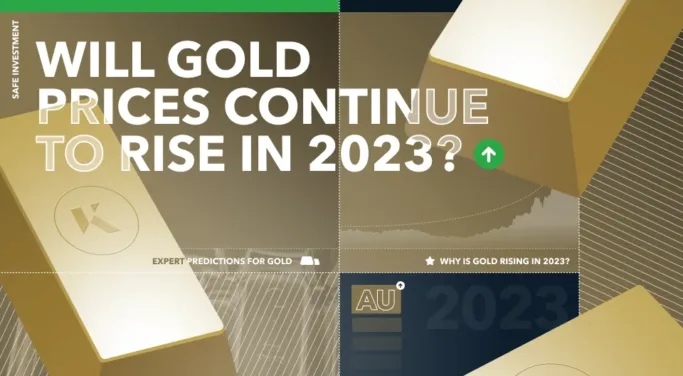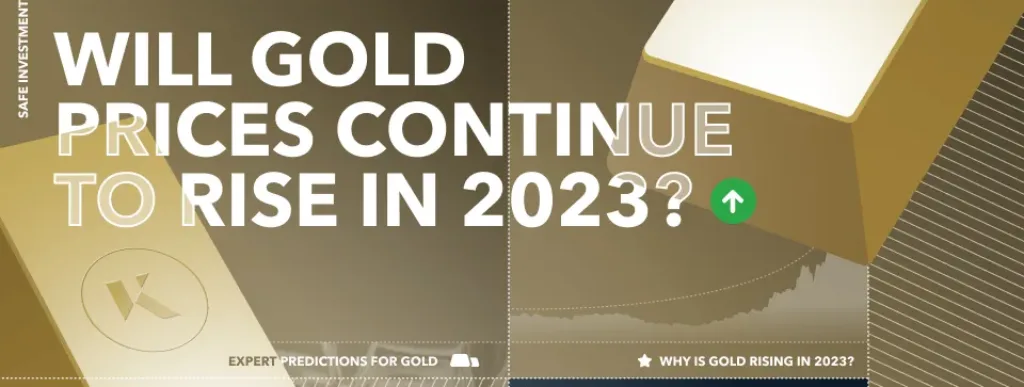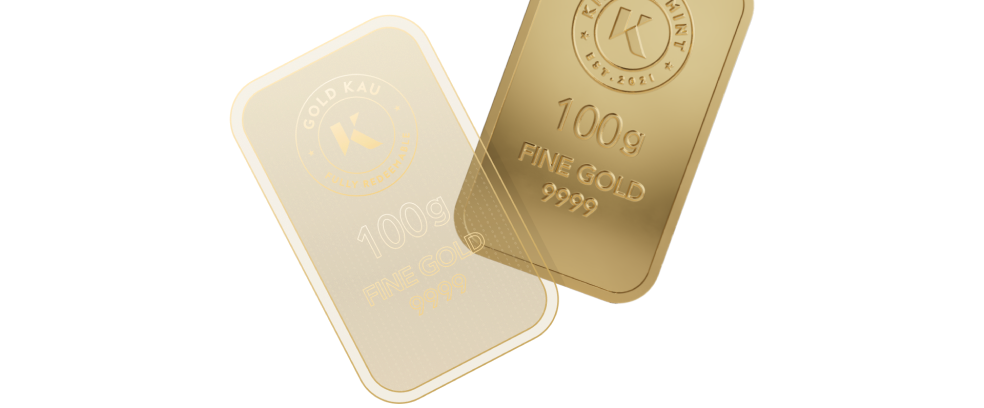The gold price has been rising since the beginning of November 2022, lifted from $1,623/per ounce (or $57.32 per gram) to as high as $2,085 per ounce or ($73.54 per gram).
There are some key reasons why gold is in a bull trend and why it could continue.
History of Gold Prices
Gold has been used as money for thousands of years, but it also has value as a wealth preservation asset and a hedge against the debasement of fiat currencies by central banks and governments. Until 1971, gold was used to back the value of paper currencies issued by governments and held as reserves by central banks.
Up until 1971, gold was exchangeable at a fixed rate ($35 per ounce) into dollars. When the United States “closed the gold window” and completely removed the convertibility of dollars into gold held by the Fed, the price of gold quickly moved higher in price as set by the market. Since gold was removed as the support foundation for the world’s reserve currency, it has ranged from a low of $43 per ounce in 1971 to as high as $2,085 in early May 2023.
Why is gold rising in 2023?
Gold has been on the move higher this year based on several factors: physical gold demand, the continued pursuit of easy monetary policies by central banks, the escalating financial system risk globally and the rising instability of the U.S. Treasury.
Eastern central bank buying
Over the past several years, eastern hemisphere central banks have emerged as buyers of large quantities of physical gold as a means of gradually pulling away from using U.S. dollars as the world’s reserve currency. The accumulation of gold by these entities hit an all-time high as measured in tonnes in 2022. The record pace of gold purchases has so far continued into 2023, led by China.
It is likely that the amount of physical gold buying will increase from the current monthly level during the fourth quarter of this year, as this is the peak seasonal period of Indian buying in observance of religious festivals and a big wedding season. An increase in India’s importation has begun already, as evidenced by the jump in premiums that dealers of kilogram gold bars and jewellery can charge to their buyers.
The increase in the amount of physical gold importation by the eastern hemisphere makes it considerably more difficult for Western banks to use gold derivatives (LBMA forward contracts and Comex futures) in an effort to prevent the gold price from rising. This will become even more onerous to accomplish now that Russia announced in early August that it would resume buying gold after it had halted gold purchases in January 2022.
The Fed’s balance sheet
Another important reason gold is rising this year is the continued easy monetary policies of central banks globally. In spite of its “hawkish policy” rhetoric, the Federal Reserve has made little progress in reducing its balance sheet by removing the money it printed between 2008 and 2022.
In March this year, it injected $400 billion back into the banking system and despite the hike in the Fed funds rates, real interest rates in the U.S. continue to be negative. The Bank of Japan, the ECB and the People’s Bank of China also continue to implement “loose” monetary policy. The resulting devaluation of these major fiat currencies ultimately manifests as price inflation and rising gold and silver prices.
Escalating risk of the global banking system
A third major factor that contributes to the rising gold price this year is the escalating risk in the global banking system. This is a result of large banks using many different forms of leverage to make loans – otherwise regarded as “risky bets” – with bank deposits and central bank reserve credit. This led to the collapse of Credit Suisse, the second-largest bank in Switzerland. In addition, three large regional banks in the U.S. abruptly and swiftly collapsed earlier this year. It was the second, third and fourth largest bank failure in U.S. history.
The collapse of these four banks is likely just the beginning of an eventual large-scale global banking crisis. This possibility has not been lost on the market. The start of the current bull trend in gold at the beginning of November 2022 can be correlated with the proliferation of news reports about the growing liquidity problems at Credit Suisse and several U.S. regional banks.
Raising the debt ceiling limit
Finally, the price of gold got a “shot in the arm” when the U.S. government raised the Treasury debt ceiling limit in early June and, shortly thereafter, when they announced that it would have to issue $250 billion more than projected just a couple months earlier, bringing the total debt issuance in its fiscal year fourth quarter to an eye-watering $1 trillion.
Then about a month after those announcements, Fitch downgraded the credit rating of the U.S. government. I would suggest that the current upward movement in the gold price is seeded in the globally perceived deterioration of the U.S. government’s financial stability.
Predictions for gold’s prices in 2023
While it’s impossible to predict the future, it is rare when the consensus forecast among so-called market experts predicts a material rise in the price of gold over the course of the ensuing year. The LBMA’s annual Precious Metals Forecast Survey of 30 “market experts” showed an average expectation for gold to end 2023 at $1,859, with the highest price predicted to be $2,025.
The survey was compiled in January when the price of gold was in the mid-$1,800, and released at the beginning of February. Gold has already been as high as $2,085 since the survey was released.
At the time of writing, gold is trading about $100 per ounce above the LBMA survey consensus forecast. Based on all of the factors discussed above and my 22-year experience in the precious metals sector, I believe there’s a high probability that the gold price could be trading between $2,100 and $2,200 by the end of 2023. I further believe that gold will continue to rise in 2024 as a result of a collision in these factors.
Gold investment
Ultimately, during times of rising systemic and geopolitical risk like the current period of time, gold is one of the only “safe” investments. It has a 5,000+ year history as a wealth preservation asset. I believe that gold is under-priced as an asset and currently offers an opportunity both for wealth preservation and wealth appreciation.
Dave Kranzler is a hedge fund manager, precious metals analyst and author. After years of trading expertise build-up on Wall Street, Dave now co-manages a Denver-based, precious metals and mining stock investment fund.
This publication is for informational purposes only and is not intended to be a solicitation, offering or recommendation of any security, commodity, derivative, investment management service or advisory service and is not commodity trading advice. This publication does not intend to provide investment, tax or legal advice on either a general or specific basis. The opinions expressed in this article, do not purport to reflect the official policy or position of Kinesis.



















